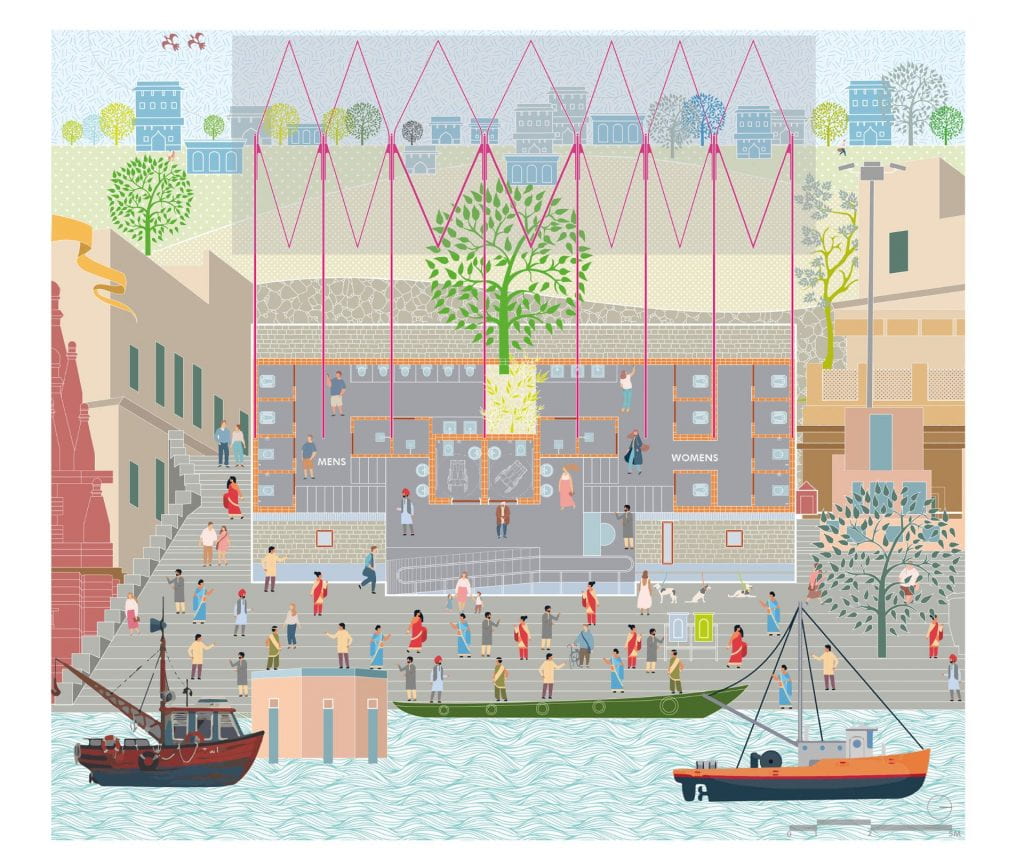
Anthea Fernandes (M.R.P. ’21) was a part of an interdisciplinary team that received Honorable Mention for The Little Big Loo Rethinking Public Toilets 2020 International Student Competition by Volume Zero Competitions. The competition prompt encouraged entries to reimagine the conventions of public toilets and strategize solutions to improve provisional health sanitation facilities. Her team comprised of Subham Pani, a Master of Architecture student at CEPT University in Ahmedabad; and Prayag Badge, a senior associate at RMA Architects based in Mumbai and Boston.
Mukti: An Emancipatory Experience
Varanasi is situated on the banks of the Ganges, in India. Each year, 6.5 million visits for pilgrimage and tourism. Also known as the ‘City of Death’, Hindus believe they will attain Moksh (true liberation) when cremated on these Ghats. In this process, 60 million trees are burned annually in India, says director of Delhi based NGO Mokshda. Declared a Smart City in 2015, over 2.7 million toilets were built by 2018. Lack of hygienic practices coupled with irregular cleaning of pit latrines and septic tanks force people to continue to defecate in the open. There’s an urgent need to design efficient & effective public toilets.
Mukti is emancipating, both metaphorically and literally. This prototype helps cities challenged by over-burdened sewage networks, limited waste disposal alternatives, and high population densities. Mukti employs a multi-utility spatial form and a modular design to enable local labor to assemble the toilet with minimum maintenance and material waste respectively. Combined with a self-sustaining bio-digester it produces methane gas that could be used for fueling cremations on the ghats facilitating efficient sewage treatment and disposal. An average of 400-500 kg of wood is required per burning pyre, resulting in huge smoke clouds and ash in the air. With the fueling of pyre ovens, that have been proposed at Manikarnika ghat (where approximately 100 bodies are burnt per day) the toilet grid can optimize the process reducing the felling of trees and air pollution. Research in other cities shows that Natural gas can reduce the amount of wood to an average of 100 kg per pyre oven. Thus providing a sustainable solution in life and death!